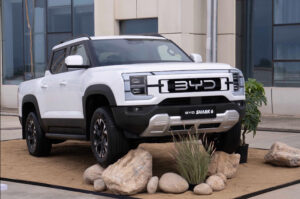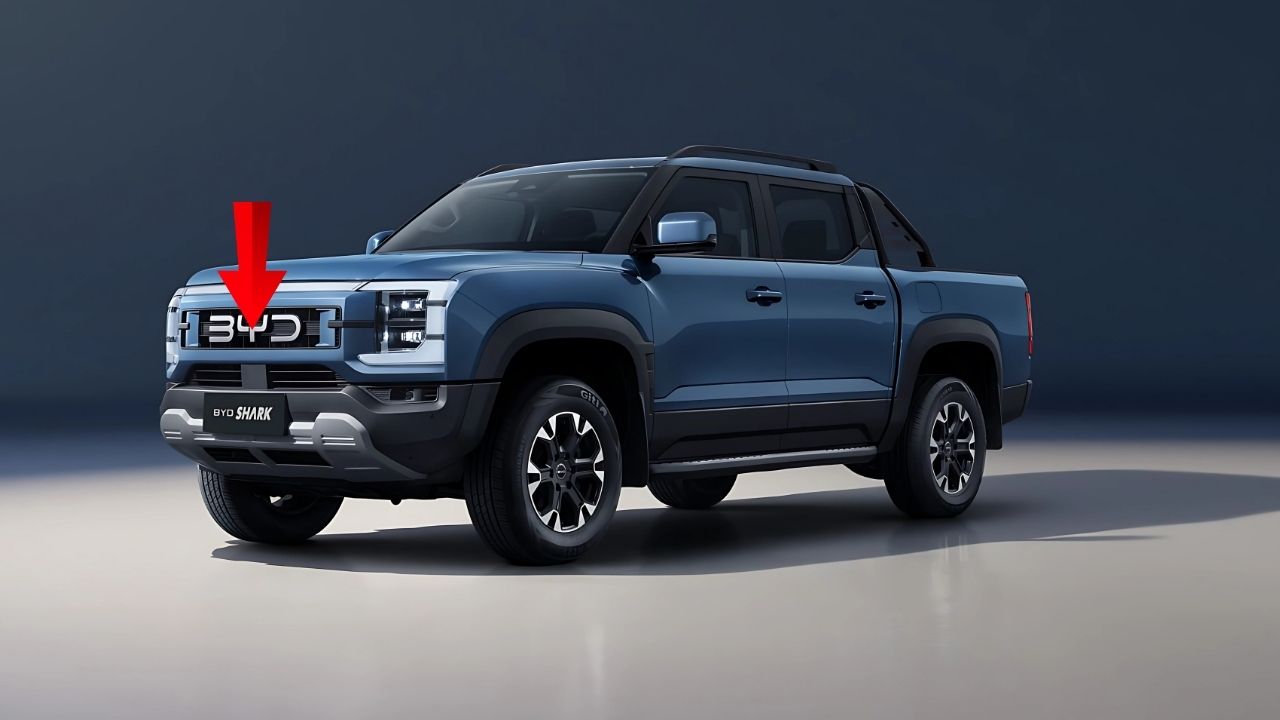The Australian automotive landscape is experiencing a seismic shift as plug-in hybrid vehicles storm the market. Two standout contenders are making waves with their competitive pricing and innovative technology.
BYD’s revolutionary Shark 6 enters as Australia’s first plug-in hybrid ute at $57,900 before on-roads, while the established Mitsubishi Outlander PHEV ranges from $57,290 to $73,790. This pricing battle represents more than numbers—it’s reshaping how Aussie drivers think about efficiency and performance.
BYD Shark 6 Pricing Breakdown: The New Kid Making Waves
The BYD Shark 6 has landed in Australia with a bang, priced at $57,900 before on-road costs. When you factor in registration, insurance, and dealer fees, you’re looking at roughly $61,000 drive-away depending on your state.
This introductory pricing puts the Shark 6 in direct competition with popular diesel utes like the Ford Ranger XLT($63,640) and Toyota HiLux SR5 ($60,670). The Chinese automaker is clearly positioning this as a value proposition that challenges traditional thinking.
BYD’s aggressive pricing strategy includes a six-year, 150,000km warranty and eight-year, 160,000km battery warranty. The company partnered with Ironman 4×4 to offer genuine Australian accessories, with the first 2,000 customers receiving a $500 accessory credit.

What You Get for Your Money
The Shark 6 Premium comes loaded with premium features that would typically cost extra on competitor vehicles. Standard equipment includes a 15.6-inch rotating touchscreen, Dynaudio 12-speaker sound system, and wireless phone charging.
Power delivery is impressive with 321kW total system output and 650Nm of torque. This hybrid ute can sprint from 0-100km/h in just 5.7 seconds—faster than many performance vehicles.
Mitsubishi Outlander PHEV: The Established Player’s Price Strategy
The Mitsubishi Outlander PHEV takes a different approach with multiple trim levels catering to various budgets. Entry-level ES variants start at $57,290, while the flagship GSR model reaches $73,790 before on-roads.
This tiered pricing strategy allows Mitsubishi to capture buyers at different price points. The ES model offers essential PHEV technology without premium frills, while higher trims add luxury features and advanced technology.
Mitsubishi’s warranty package includes a standard five-year, 100,000km warranty that extends to 10 years/200,000km when serviced within their dealer network. The battery warranty covers eight years or 160,000km.
Value Proposition Across Trim Levels
The Outlander PHEV ES represents exceptional value at $57,290, offering 84km electric range and seven-seat capability. Moving up the range adds features like power-adjustable seats, premium audio systems, and advanced driver assistance.
Current promotional offers include a $2,500 cash card with purchases made before June 30, 2025. This effectively reduces the entry price to around $54,790 before on-roads.
Head-to-Head Price Comparison: Where the Numbers Tell the Story
When comparing like-for-like specifications, the pricing picture becomes clearer. The BYD Shark 6 at $57,900 sits between the base Outlander PHEV ES ($57,290) and the mid-level LS variant (approximately $45,310 drive-away with current offers).
However, these vehicles serve different purposes. The Shark 6 is a utility vehicle designed for work and adventure, while the Outlander PHEV focuses on family transportation and daily commuting.
Key pricing considerations:
- BYD Shark 6: $57,900 + on-roads ≈ $61,000 drive-away
- Outlander PHEV ES: $57,290 + on-roads ≈ $62,000 drive-away
- Outlander PHEV GSR: $73,790 + on-roads ≈ $78,000 drive-away
Running Costs and Long-Term Value
Both vehicles offer significant fuel savings compared to traditional petrol or diesel alternatives. The Shark 6 claims 2.0L/100km when the battery is charged, while the Outlander PHEV achieves 1.5L/100km under ideal conditions.
Service intervals favor the BYD with 12 months or 20,000km compared to Mitsubishi’s 12 months or 15,000km. BYD’s capped-price servicing averages $413.55 annually while Mitsubishi charges approximately $549 per year.
Technology and Features: What Your Money Buys
The BYD Shark 6’s standard specification list reads like a luxury vehicle brochure. The 15.6-inch rotating touchscreenadapts between portrait and landscape modes, while the Dynaudio sound system delivers premium audio quality.
Advanced driver assistance includes autonomous emergency braking, adaptive cruise control, and lane-keeping assistance. The 360-degree camera system provides excellent visibility for parking and maneuvering.
The Mitsubishi Outlander PHEV offers similar technology but varies by trim level. Higher-spec models include 12.3-inch touchscreen, head-up display, and premium audio systems. The seven-seat configuration remains a unique selling point in the PHEV segment.
Battery Technology and Performance
Both vehicles utilize different battery technologies affecting pricing and performance. The Shark 6 features a 29.58kWh LFP battery providing 100km electric range, while the Outlander PHEV uses a 20kWh lithium-ion pack for 84km range.
Charging capabilities differ significantly. The Shark 6 supports DC fast charging up to 18kW, while the Outlander PHEV relies primarily on AC charging. This impacts convenience and daily usability.
Market Positioning and Target Audience
BYD’s pricing strategy targets traditional ute buyers considering electrification. The Shark 6 competes directly with diesel utes while offering superior fuel economy and reduced emissions.
Mitsubishi’s approach serves the family SUV market with multiple price points. The brand leverages its established dealer network and proven reliability record to justify premium pricing on higher trims.
Current market dynamics show strong demand for both vehicles. BYD has 6,129 Shark 6 sales in early 2025, while Mitsubishi sold 2,422 Outlander PHEVs in the first half of 2024.
Financing and Ownership Costs
Finance rates vary between manufacturers and dealers. BYD partners with EV Direct Finance offering competitive rates for qualified buyers. Mitsubishi provides traditional financing through their dealer network.
Insurance costs tend to favor the established Mitsubishi brand due to wider service network and parts availability. However, BYD’s growing presence is closing this gap rapidly.
Future Pricing Trends and Market Evolution
BYD’s introductory pricing for the Shark 6 is expected to increase in 2025 as demand stabilizes. Early buyers benefit from aggressive pricing designed to establish market presence.
Mitsubishi‘s 2025 updates to the Outlander PHEV include a larger 22.7kWh battery and improved 86km electric range. These enhancements may justify modest price increases.
Competition intensity from brands like Ford (Ranger PHEV at $71,990) and GWM (Cannon Alpha PHEV) suggests pricing pressure will remain significant throughout 2025.
Government Incentives and Total Cost Impact
State-based incentives can significantly impact total ownership costs. Some states offer registration discounts and stamp duty exemptions for PHEV vehicles.
Novated leasing benefits make both vehicles attractive for salary packaging, with potential tax savings reducing effective purchase prices by 15-30% depending on individual circumstances.
Expert Recommendations: Which Offers Better Value?
For pure value proposition, the BYD Shark 6 delivers exceptional features and performance at its $57,900 price point. The combination of utility, technology, and efficiency represents outstanding value for money.
Family buyers seeking seven-seat capability should consider the Outlander PHEV ES with current promotional pricing. The established service network and proven reliability justify the similar price point.
Commercial users will appreciate the Shark 6’s 2,500kg towing capacity and vehicle-to-load functionality. These practical features enhance work capability beyond traditional utes.
Short FAQs
Q: Which is cheaper to buy, BYD Shark 6 or Mitsubishi Outlander PHEV? The BYD Shark 6 at $57,900 is marginally more expensive than the base Outlander PHEV ES at $57,290, but current Mitsubishi offers can reduce this gap.
Q: What are the ongoing costs for each vehicle? BYD offers lower annual servicing costs at $413.55 versus Mitsubishi’s $549, plus longer service intervals of 20,000km versus 15,000km.
Q: Which vehicle holds value better? Mitsubishi’s established presence suggests better resale values currently, though BYD’s growing market share is improving this outlook.

